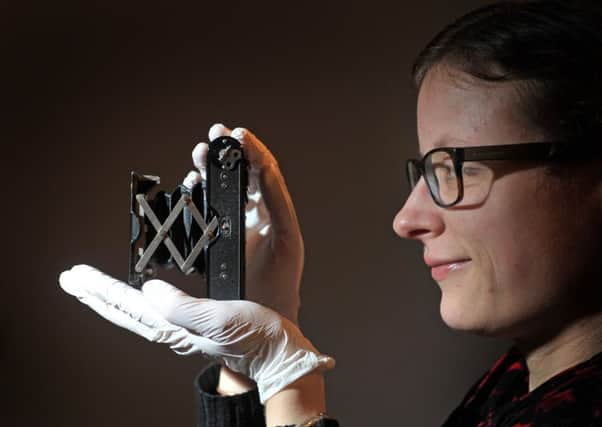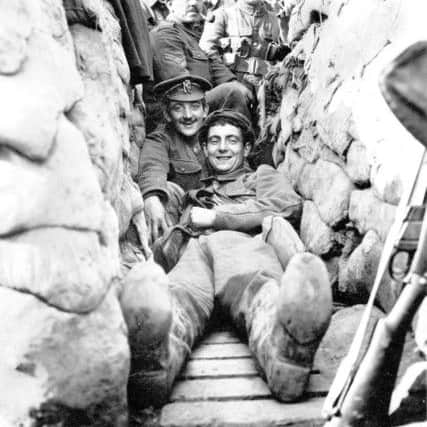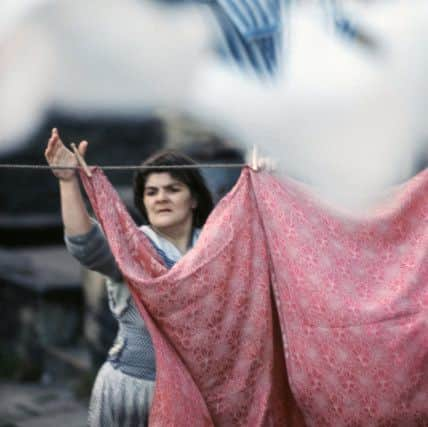Shot in a second, remembered forever: Images that showed Britain to itself


The young soldiers who filed into the trenches on the Western Front did not know their fate, but they could not have suspected that a century later they would be celebrated as documentarians.
The pictures they took on their new Kodak vest cameras were not only among the first amateur photographs but also the first social media messages.
Advertisement
Hide AdAdvertisement
Hide AdThey sent them by army post, to be developed by their families back home. They were seen arm-in-arm with comrades, flashing smiles that said, ‘don’t worry’. By the time their relatives got them back from the chemists, they were likely dead.


The names of the cameramen are mostly not recorded. But next month in Yorkshire they will share equal billing with photographers the world knows.
Britain In Focus, a major exhibition and three-part TV series, is a sweeping celebration of the revolution in popular photography that began during World War One and continues today.
Its contributors include celebrity photographers such as Cecil Beaton, and award-winning photojournalists like Eamonn McCabe.
Advertisement
Hide AdAdvertisement
Hide AdBut it was the soldiers in the trenches who helped to establish photography as the most democratic art form there had been.


“They were the first citizen journalists,” said John O’Shea, of Bradford’s National Media Museum, which is staging the exhibition.
“When the War Office became aware, they censored them, because they realised they wouldn’t be able to control the narrative of the war.
“But the images we have of the Christmas truce, of British and German soldiers and officers fraternising, exist because of the vest pocket cameras and the anonymous photo journalists.”
Advertisement
Hide AdAdvertisement
Hide AdThough the technology has changed, its ability to capture the moment has not, and the exhibition presents pictures from the past alongside those which followed, whether on celluloid, digital pixel or social media. Some of the oldest images have been curated by photographers who practice their craft on the currently popular canvas of Instagram.


Yet it is the recent past that retains the greatest capacity to surprise, and the organisers have chosen as their signature image one by the pioneering cameraman John Bulmer, whose colour pictures of industrial life in the 1960s shone like a beacon from the bleak, black-and-white West Yorkshire landscape.
Bulmer, grandson to the founder of the west country cider firm, traversed the north taking pictures of everyday life, which, if it was captured at all, was done only in monochrome.
“He broke the mould,” said Mr O’Shea.
“Images like these hadn’t been seen before John produced them, and what he did in places like Bradford and Halifax, was to use colour to bring to life the lives of people living and working in the north.


Advertisement
Hide AdAdvertisement
Hide Ad“We picked out a picture of a woman hanging out the washing. It’s an everyday activity but his use of colour and his creative composition gives it a real sense of drama.”
Bulmer’s work was celebrated in its day, taking up pages in the new Sunday colour supplements. The photographer, now 78, will travel to Bradford on the eve of the exhibition to take part in a discussion with McCabe, who presents the companion series on BBC4.
• The new exhibition, from March 17 to June 25, includes some of the earliest photographs ever taken, at Lacock Abbey in Wiltshire in the 1840s by the pioneer William Fox Talbot.
His system of creating positive prints from negative film was arguably the first photographic distribution system, and helped to popularise the new medium.
Advertisement
Hide AdAdvertisement
Hide AdThere is also a selection of postcards from the now-forgotten world of the Carte de Visite, one of the first commercially available methods for sharing formal portraits of famous people and family members alike, which involved having them printed on 2½-by-4in “cabinet cards” and mounting them in albums, in the same way as the football stickers of today.